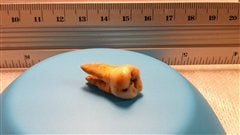Researchers in Canada have managed to sequence the entire genome of a 6th century bubonic plaque that weakened empires and wiped out vast numbers of the world’s population.
Hendrik Poinar is the principal investigator at McMaster University’s Ancient DNA Centre, where researchers try to answer a range of evolutionary and molecular biological questions using archaeological, paleontological, and forensic remains.
Listen
Called the Justinian plaque, it is the first well-documented instance of the world’s plagues.
It was named after the Byzantine emperor of the period and was a pandemic which caused massive deaths as it spread from China to Africa and then throughout Europe, before seemingly becoming extinct.
Thanks to this discovery, the second plague, known as “Black death” which ravaged Medieval Europe and the known world in the 12th century, is known to be a different strain of the bacteria.

Both are believed to be initially spread by infected rodents and their fleas, but can develop in humans into a pneumonic infection in the lungs and be spread from person to person.
The McMaster-based Ancient DNA Centre is one of only a small handful of such research operations around the world.
Using techniques they developed, they were able to sequence the genome of this ancient bacteria extracted from the teeth of European victims.
They are now able to compare the earlier bacteria to the genome of the Medieval plaque, or “black death” several centuries later, and with strains of the “Yersinia pestis,” plaque bacteria which still exists in isolated regions of the world.
In the US there are about seven cases of plague reported each year, while the last case in Canada was in 1939.
In 2012, some 60 people died of plaque, while in December 2013,there was a report that an outbreak took the lives of 20 villagers there.

Professor Poinar says by studying the genome of these ancient bacteria and those of the human victims, they will be able to better understand the factors, bacteriological, human, sociological, and environmental that enabled pandemics of the past, and therefore help to possibly avert or mitigate future outbreaks.







For reasons beyond our control, and for an undetermined period of time, our comment section is now closed. However, our social networks remain open to your contributions.